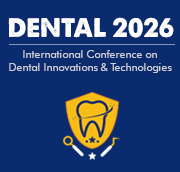Title : Osteonecrosis of the Jaw
Abstract:
Introduction: Osteonecrosis of the jaw (ONJ) is a rare but serious adverse drug reaction (ADR) commonly associated with bisphosphonate and denosumab therapy. The FAERS database consists of voluntarily reported ADRs associated with post-market, FDA-approved medications as well as natural substances, vaccines and medical devices. Prior research by Zhang et al utilized the online, public FDA Adverse Event System Database to explore this serious side effect further. Their data identified and described several novel medications associated with ONJ. Our study aims to further explore MRONJ through more stringent FAERS database case screening and comparing prior 2010-2014 data to 2015-present data. This allows for a description of the reporting of medication induced ONJ over time and for the identification of newly described medications. Methods: We searched the FAERS database for all reported cases of medication-induced ONJ from 2010 to present. Cases lacking patient age or gender were excluded from review. Only adults (age 18 and older) and reports from Healthcare Professions were included for analysis. Duplicate cases were removed. The top 20 medications were identified and described for 2010 to 2014 and 2015 to present. Statistical analysis was performed on the collective patient demographics of medication-induced ONJ reports as well as for the two timeline ranges. Results: 19,668 cases of ONJ were reported to the FAERS database from 2010 to present. Of these, 8908 cases met inclusion criteria. 3,132 cases were reported from 2010 to 2014 and 5,776 cases from 2015 to present. Average age from 2010 to 2014 was 66.1 +/- 11.1 years, while average age from 2015 to present was 69.2 +/- 11.5. Gender distribution during the 2010-2014 time frame included 2026 females (64.7%) and 1106 males (35.3%). Gender distribution during the 2015-2021 time frame included 64.3% female (3712/5776) and 35.7% male (2064/5776). The top 20 medications from 2010-2014 and from 2015-present are shown in Table 1. Discussion: Stricter inclusion criteria and removal of duplicates allowed for improved reliability despite fewer identified cases of medication-induced ONJ than prior research. Review of the 2010-2014 data set identified several medications and drug classes associated with ONJ that were not previously described (see Table 1). Novel drugs and classes described between 2015 to present identified Pomalidomide, Radium 223, nivolumab, and Cabozantinib. Denosumab was found to be the most frequently reported medication associated with ONJ within the FAERS database. While unable to imply incidence rates from our data due to the nature of the FAERS database, our findings provide further description of the various medications associated with ONJ and elucidate patient demographics associated with the ADR. Additionally, our study identifies cases of medication-induced ONJ with several newly described drugs and drug classes that have not been previously described in literature. Table 1 This table depicts the number of cases of MRONJ reported to the FAERS database for each



